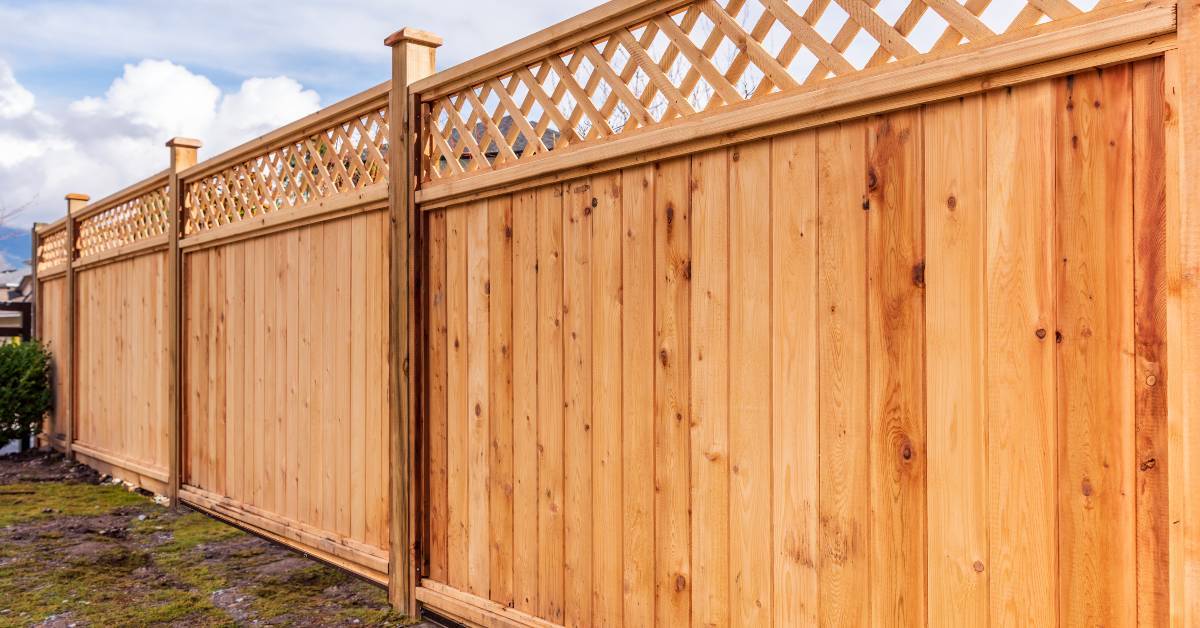Popular Options for Wood Fencing in Southwest Florida
Wood fences continue to be the most popular choice in residential fencing. A wood fence in Southwest Florida will have a less durability and require regular maintenance. However, wood is still chosen over other materials, like vinyl or composite, due to cost, availability, and natural aesthetic. Wood fences offer a natural beauty that has yet to be replaced by synthetic products. With that in mind check out your wood options below.
Cypress
Cypress trees (Southern Cypress or Bold Cypress) are native to Florida and thrive in wet conditions. The lumber requires no chemical treatments in order to resist moisture. Cypress wood also is not favored by termites and insects.
Key advantages of Cypress fencing:
- Consistent color
- density
- hardness
- and less knots than many alternatives.
Press Treated Lumber
Pressure treated fencing consists of mostly Southern Yellow Pine (SYP) and is often the most popular choice for fencing due to the low cost. Pressure treated pine will be at least 25% less than the next cheapest wood.
Nearly all pressure treated fencing or posts will be treated with a chemical to preserve the wood from moisture and insects. Pressure treating protects against subterranean termites. The most common chemicals used to treat pressure treated wood include:
- Alkaline Copper Quaternary (ACQ),
- Copper Azole (CA),
- and Micronized Copper Quaternary (MCQ).
Pressure treated lumber should last 20 years or more and may be offered with a limited lifetime warranty.
Pressure treated fencing will arrive with a green tint and then turn gray after exposure to the elements. For above ground use, the graded lumber can be used for everything except posts. It is highly recommended that pressure treated lumber be sealed on a regular basis to protect it from rain.
Also, check to see how the pressure treated wood is air dried or kiln dried. Kiln dried wood will be more dimensionally stable, which results in less warping. A “KDAT” stamp indicates kiln dried wood.
Spruce
Untreated spruce picket fences and cross rails are most commonly used in prefabricated 4×8- or 8×6-foot picket and stockade-fence sections that you find at your local big box store. These are then installed between pressure-treated fence posts.
Spruce must regularly be treated with a water-resistant finish to resist south Florida weather.
Spruce is less durable than cedar and more susceptible to insect damage than cedar.
Cedar
Western Red Cedar has a good reputation for use in fences due to the natural oils which protect the wood from moisture and insect damage. It also remains fairly stable, so it does not shrink, warp, cup, swell, or twist as much as other woods.
However, even though homeowners desire the natural properties of real cedar, these characteristics are really only found in the heartwood of cedar. Most red cedar fencing on the market is new growth or sapwood cedar.
So if you went looking for a red cedar fence in Sarasota you will probably not end up with a cedar fence with desirable properties. Quality red cedar fences can be obtained with careful shopping and asking the right questions.
Cypress is a good alternative to red cedar in Southwest Florida.
Redwood
One of the most expensive wood choices for fencing is Redwood (Sequoioideae). The high cost of redwood makes it uneconomical for most people for large projects. very large or long fences, However, its beauty and durability make it one of the best materials for fencing.
If you are constrained by budget and would still like to use redwood consider using redwood for the pickets or fence panels and a more common wood for the fence posts. While high-grade redwood is very durable, being resistant to insects and rot, it will require treatment with a clear stain to preserve the natural color of the wood.
